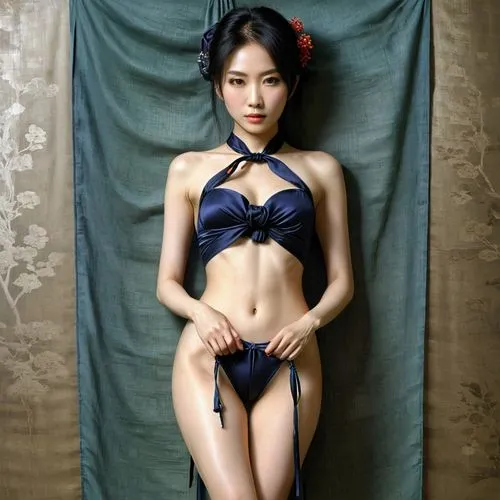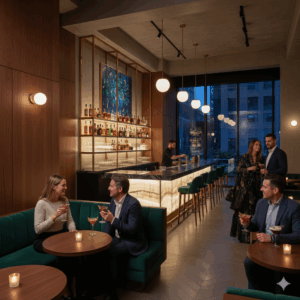In modern Japanese cities, adult venues are highly structured urban spaces: reception desks sit near street level; private rooms or small counters are upstairs; lighting is soft and directional; admission sequences are scripted. Services are framed as standardized contact formats (e.g., bathing support, massage, or oral contact) rather than open-ended acts. Guests range from 20s to 50s, with an increasing share of visitors and expats. Culturally, these venues are part of the night-time economy’s “organized intimacy”: proximity is choreographed, transactions are timed, and rules are explicit. This guide explains how foreigners can use adult entertainment in Japan safely and efficiently—without slang, and with only primary (official) links for verification.
1. Where should you start in “adult entertainment in Japan”?
2. Which areas are practical, and how do you access them?
3. Prices, time, and eligibility—what should you expect?
4. Venue types and services—how are they structured?
5. Reservations, etiquette, and useful phrases—what works?
1. Where should you start in “adult entertainment in Japan”?

1-1 What the laws say (plain English)
Conclusion: penetrative sex for money is prohibited; many non-penetrative erotic services are licensed and regulated. The core statute is the Entertainment Business Act (official text), which defines business categories, hours, and operating zones. The Anti-Prostitution Act prohibits intercourse for payment (official text). Age-of-majority in Japan is 18 (since 2022) per the Ministry of Justice (MOJ Q&A), while alcohol purchase/consumption requires 20+ per the National Tax Agency (NTA official).
1-2 What documents to carry
Bring a passport; venues perform age and identity checks at reception. Japan’s immigration service also reminds foreign residents/long-stay visitors about identification rules and legal compliance (Immigration Services Agency – guidance). Many venues operate a simple script: reception greets → ID check → choose time & fee → payment → guided entry.
1-3 Choosing a format that fits language and time
Non-Japanese speakers do best with standardized formats (fixed time and fee) and venues that post rules clearly on their official sites. Confirm last trains to avoid rushing: use JR East timetables (official) and Tokyo Metro (official). Typical visit length is 60–120 minutes including reception.
2. Which areas are practical, and how do you access them?

2-1 Access and last trains
Conclusion: plan the exit first, then pick a venue. Final departures are line-specific; check JR East and Tokyo Metro. For Toei lines and night buses, see the multilingual portal of the Tokyo Metropolitan Bureau of Transportation (Toei official).
2-2 Local rules in nightlife streets
Conclusion: follow ward rules; many districts restrict touting. Shinjuku publishes its anti-solicitation ordinance online (Shinjuku Ward official). Tokyo’s youth ordinance aims at healthy development and informs age checks (TMG ordinance).
2-3 Table 2: Access & Hours (Official Links)
Table 2: Access & Hours
| Station / Network | Walk Time to Venues | Last Train Window | Area (JP/EN Link) |
|---|---|---|---|
| JR East (Yamanote axis) | 5–12 min typical to nightlife clusters | 23:30–00:40 (check exact) | JR East Timetables (official) |
| Tokyo Metro | 3–10 min from major exits | Late evening; line-specific | Subway Map (official) |
| Toei Subway / Bus | Varies by stop | Night options limited | Toei Multilingual (official) |
Conclusion → numbers → source: plan around late trains (~23:30–00:40) and confirm on JR East / Tokyo Metro.
3. Prices, time, and eligibility—what should you expect?

3-1 What the numbers mean in practice
Conclusion: most foreigners succeed with clear, timed menus and published fees. Entry or base fees usually cover room/time; optional extensions cost extra and are quoted transparently at reception. Confirm alcohol rules (20+) via the National Tax Agency’s official page (NTA – under-20 drinking prevention).
3-2 Eligibility checks and local ordinances
Conclusion: carry your passport; follow local rules. Youth protection frameworks and ward ordinances inform door policies; see Tokyo’s youth ordinance (official) and Shinjuku’s anti-solicitation ordinance (official).
3-3 Table 1: Venue Types & Base Fees (law-aware)
Table 1: Venue Types & Base Fees
| Venue Type (regulated format) | Typical Fee (base) | Session Time | Official Rule/Reference (JP) |
|---|---|---|---|
| Private-room bathing/massage–style services (non-penetrative) | ¥12,000–¥30,000 | 60–120 min | Entertainment Business Act (official) |
| Parlor/booth formats (seated service, time-metered) | ¥6,000–¥15,000 | 30–90 min | Entertainment Business Act (official) |
| Escort/dispatch formats offering non-penetrative services | ¥8,000–¥20,000 + transport | 60–120 min | Entertainment Business Act (official) |
Conclusion → numbers → source: base fees above are typical city ranges; core definitions and compliance derive from the Entertainment Business Act. Intercourse for payment is prohibited by the Anti-Prostitution Act.
4. Venue types and services—how are they structured?

4-1 The spatial script
Venues often use multi-floor layouts: reception and lockers near ground level; waiting lounges on mid-floors; private rooms above. Lighting is warm and directional; sound is muffled. This ensures privacy and predictable flows. Staff give concise, ritualized instructions (shoe lockers, valuables, call buttons, extension pricing).
4-2 What is and is not on the menu (law-aware)
Conclusion: services remain within non-penetrative frameworks. Any offer of intercourse for payment would conflict with national law—see the Anti-Prostitution Act (official). Venues maintain compliance with the Entertainment Business Act (official) and display operating hours and local permissions.
4-3 Table 3: Reservation & Eligibility (with official links)
Table 3: Reservation & Eligibility
| Method | Lead Time | Eligibility / Rule | Official (JP Link) |
|---|---|---|---|
| Walk-in with ID | Earlier hours better | Adult; follow house rules | Entertainment Business Act |
| Phone / web reservation | Same day–3 days | Name, time, course, phone | Entertainment Business Act |
| Alcohol service on premises | Check during booking | Alcohol is 20+ | NTA (official) |
| Local street regulations | Always active | Avoid touts / follow signs | Shinjuku ordinance |
Conclusion → numbers → source: book earlier for weekends; alcohol is 20+ (NTA); follow ward rules (e.g., Shinjuku).
5. Reservations, etiquette, and useful phrases—what works?

5-1 How to book smoothly
- Decide course/time before calling. Prepare your name, preferred start time, and a callback number (Japan SIM or hotel landline).
- Use simple English + key Japanese nouns: “60-minute course, 20:00, two persons.”
- Confirm rules on the venue’s page and arrive 10–15 minutes early for ID check.
5-2 Etiquette in institutionalized spaces
- Photography: always ask first; many venues prohibit photos inside.
- Hygiene: follow staff’s bathing and hand-wash instructions; this is part of the service ritual.
- Communication: if you don’t understand, ask “Eigo daijōbu desu ka?” (Is English OK?).
- Payments: small venues may prefer cash; larger venues accept cards. Keep a buffer of ¥10,000–¥20,000 for extensions.
5-3 Useful phrases (short and clear)
- “Yoyaku onegai shimasu. 20:00, 60-pun kōsu.” (Reservation please. 20:00, 60-minute course.)
- “Ryōkin wa ikura desu ka?” (How much is the fee?)
- “Pasuporto o misemasu.” (I will show my passport.)
- “Nobashi wa dekimasu ka?” (Is extension possible?)
- “Saigo no densha wa nanji?” (What time is the last train?) — check on JR East or Tokyo Metro.
6. Summary and Next Steps

Keep these official references open while planning: the Entertainment Business Act (e-Gov), the Anti-Prostitution Act (e-Gov), MOJ age-of-majority Q&A, NTA alcohol 20+, Shinjuku ordinance, JR East timetables, and Tokyo Metro.
SoapEmpire Recommendation: Planning to navigate Japan’s adult entertainment as a foreigner often looks simple on paper—pick a district, choose a course, show your passport—but the reality has moving parts. Pages are in Japanese, last trains differ by line, and venues use short, ritual instructions that assume local knowledge. The result is common: you spend precious time comparing unofficial summaries, only to discover that the last train leaves earlier than expected, or that the course you wanted sold out to earlier walk-ins.
SoapEmpire removes this friction with a crisp, law-aware workflow in plain English. We start by checking the official sources that matter—e-Gov law texts for boundaries, ward pages for street rules, and operator sites for hours and fees. We then translate those constraints into a practical route that balances time and comfort: a reliable venue first, optional extension next door, and a realistic last-train checkpoint. Because the scene is standardized, we can map the reception flow (ID check, fee tier, lockers, shower instructions) and pre-brief your group so everyone knows what will happen step by step. If your priority is privacy, we choose venues with clearer room transitions; if your priority is pacing, we structure 60-minute cores with 30-minute buffers.
What you gain is certainty. You’ll arrive with the right expectations about eligibility (adult status, alcohol 20+), costs (base fee plus optional extension), and timing (entry window vs. train schedules). You’ll also avoid the most common pain points: misunderstandings at the counter, mismatched course names, or language surprises. Whether your interest is citywide or focused on a single district, SoapEmpire packages everything into a short itinerary you can follow without second-guessing. We call this “organized intimacy, organized logistics.”
To keep your planning light, we include exact phrases you can show on your phone, a backup taxi estimate if you miss the train, and quick reminders about ward rules. If you want us to make the call and hold the slot, we can do that, too. For reservations or inquiries, please contact us via the inquiry form. We’ll confirm availability, align the schedule with your transport, and send a simple, English itinerary you can share with friends.
Related SoapEmpire guides: Tokyo Red-Light District Basics / Osaka Soapland & Nightlife Guide / How to Book in Japan (Plain English) / official portal: SoapEmpire
If you’re interested in visiting any of these places, SoapEmpire offers a 24-hour booking support service for only $10.
Just send the store name, preferred time, and your name (nickname is fine) to:
artistatakuma@icloud.com.
We’ll take care of your reservation quickly and smoothly.
FAQ
- How old do I need to be?
- Legal adulthood in Japan is 18+ (MOJ), but alcohol is 20+ (NTA). Venues check IDs and may set their own thresholds; bring your passport.
- Is payment by card common?
- Large venues often take major cards; small venues may prefer cash. Keep a buffer of ¥10,000–¥20,000 for extensions or deposits.
- How do I avoid street touts?
- Stick to venues with clear signage and official websites. Some wards restrict touting—see Shinjuku’s ordinance (official).
- What’s the best time to go?
- Arrive before 21:00–22:00 for smoother reception; align your exit with last trains—check JR East and Tokyo Metro.
- Is intercourse for payment legal?
- No. Intercourse for payment is prohibited under national law; see the Anti-Prostitution Act on e-Gov (official). Licensed venues operate within non-penetrative frameworks under the Entertainment Business Act (official).

